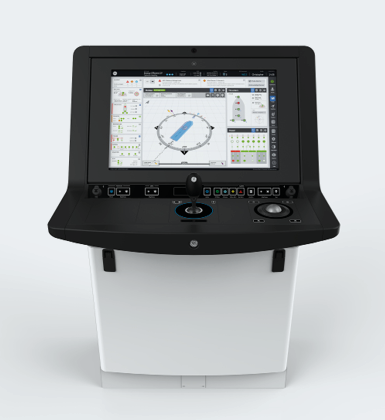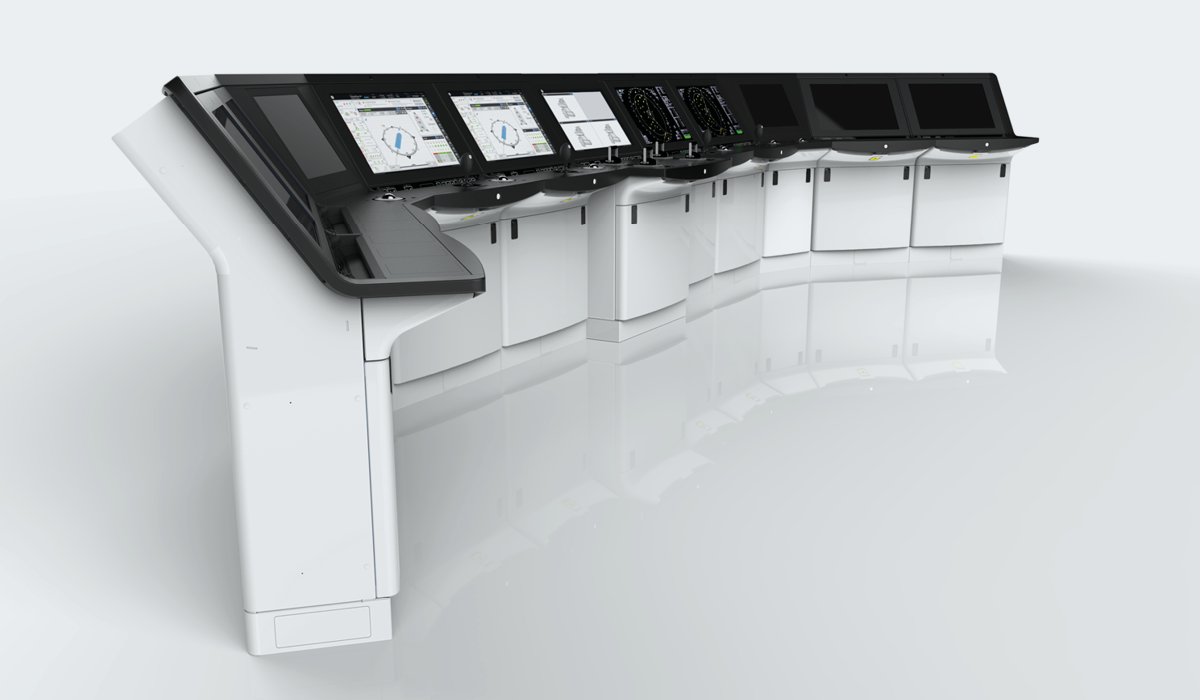

PROJECT: GE SHIPS BRIDGE SUITE
Modular ship control system
ABOUT
GE’s new bridge suite of modular consoles integrates positioning technology, engine controls, and navigation equipment into any bridge configuration. From large, fully integrated suites to free standing consoles or ‘separates’ installed into existing work stations and confined spaces. Existing ships can now serve new markets without a major refit and new lightweight vessels can install GE’s new bridge suite. A unique moveable screen helps eliminate reflections and optimises the touch screen ergonomics,
distant viewing angles. The modular construction allows major components to be easily replaced. It can be extended forward to accept manual thruster controls or sideways to accommodate special equipment. All work surfaces are non-reflective and have integrated grab handles for secure operation in difficult waters. All consoles are designed to IP22 standards for water ingress management and internal protection.

A unique moveable screen helps eliminate reflections and optimises the touch screen ergonomics
Research
LA have studied the control procedures on cross-channel ferries, Rhine barges and the new generation of fast support vessels used to build and service oil platforms and off shore wind turbines.
These ships are often used in confined spaces and rough seas so personal support when standing, accurate intuitive instruction, clear vision of the monitors and feedback data from several positions, are all vital for safety and the completion of the mission. Compliance with strict national and global industry standards like DNV is essential for global sales.





GE’s new positioning system needed to be intuitive to control, fast to react and have clear visual feedback
User interface
For the ships commercial viability and safety at sea, GE’s new positioning system needed to be intuitive to control, fast to react and have clear visual feedback. The commercial requirement to manoeuvre ships accurately in confined spaces has led to the development of new positioning technology, engine control systems and monitoring devices. As every command on a ship incurs a complex series of actions to implement, the objective has to be clear and the captain must combine his observation of movement with all the technical data to define ‘position’ accurately.
As a result, a clear intuitive user interface which links the instruction to the effect is vital. The introduction of new touch screen technology would also remove the risk of error caused by complex manual control panels. In a marine environment, interacting with a flat sheet of glass in bright sunshine, total darkness or rough seas became a key challenge. The operator needs to support himself, accurately instruct the system then monitor the effect on the ship.

Interaction
The novel introduction of a pivoting screen allows the operator to stand close to the console for comfortable accurate touch control, whilst also gripping the deep edge profiles for support in rough weather. Feedback images from the screen can be transferred to any monitor on an overhead display and viewed from distance.
The controlling console in a suite is clearly identified by the colour of the badge on the front which helps differentiate its function, as other screens may look similar. Display graphics retain the same appearance in day and night mode for instant recognition. All access for servicing is from the front.
Production & technology
The lightweight laser-cut steel construction is galvanised and powder coated to survive in the salty environment. The strength and versatility of the modules appeals to owners and ship yards because it simplifies their specification and installation process.
The use of the high resolution touch screen also enables the integration of bespoke ‘soft’ control panels for other purposes to suit specific ships. All the work surfaces are designed to support customer specified instrument and comms equipment.


Delivery
Design development, ergonomics rigs, initial user interface and production engineering work done at LA in close liaison with the project team in Rugby who developed the screen control
and managed the in-house technical R&D input and potential supply chain.







